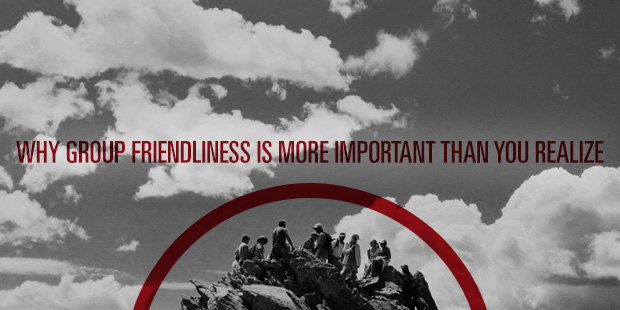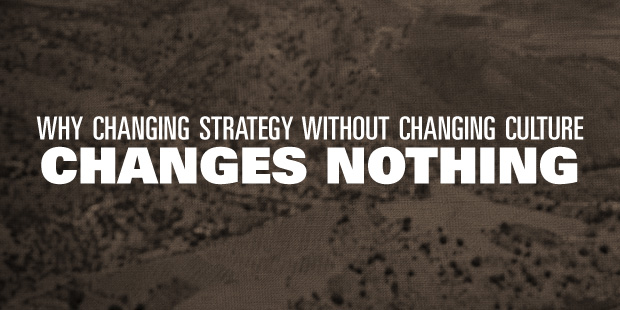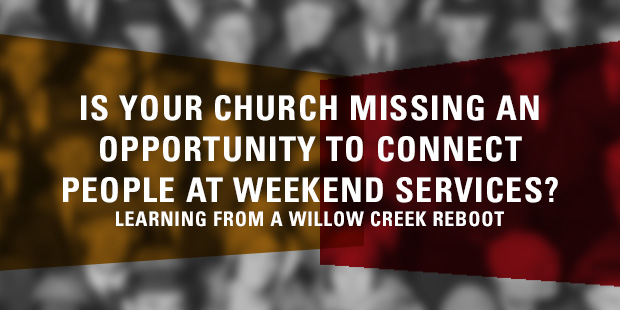
2 Keys for Doing Life Together
Dietrich Bonhoeffer, writing in The Cost of Discipleship, states, “On two separate occasions Peter received the call ‘Follow me.’ It was the first and last word Jesus spoke to His disciple. A whole life lies between these two calls.”
Could it be possible that those two simple, yet profound words hold the key for pastors who are desperately seeking solutions to overcome the dismal state of discipleship in their churches?
The call to Peter – and to other disciples – is one of single-minded obedience. Jesus was asking them – and us – to rely on Christ’s word – the Word of God Himself.
One solution to your discipleship problem?
Doing life together with spiritual depth yet practical wisdom.
THE QUICK SUMMARY – The Irresistible Community, by Bill Donahue
We all want a place where our stories matter, our voices are heard, our uniqueness is celebrated, our failures are embraced, and our hopes are unleashed. That kind of deep, life-changing community was modeled perfectly by Jesus and the ragged bunch of disciples with whom He chose to spend His time. But how can we create it in our lives?
Using the relationship of Jesus to His disciples in the upper room, Bill Donahue presents a simple but compelling approach to community life that was modeled by Jesus and offered to us all today. Using a table, a towel, and the truth, Jesus created an “irresistible community” where everyone finds a place to belong, live fully in the truth, and serve others with joy.
A SIMPLE SOLUTION
In that upper room long ago at the beginning of the Passover celebration, Jesus set the stage for a whole new experience, not only for the disciples then but also for us now. The disciples didn’t know what they were in for, as Jesus fulfilled the role not only of host by also of servant.
If we enter the upper room at the invitation of Jesus, and experience fellowship with Him, we are receiving an irresistible invitation to experience abundant life in His name.
The Messiah is on a high-stakes mission, nothing like the one the disciples have envisioned. Jesus uses three common elements – a table, a towel, and the truth – and promises to change the world.
In the moments of the Last Supper, Jesus used some very common objects to communicate some very profound mysteries concerning the kingdom of God.
The first is a table. So common were tables that people hardly noticed them beyond their basic function as a workbench, a storage facility, or a feeding station. But not after tonight. Tonight the table will become something remarkable. They will never think of a table the same way again. And neither will you.
The second is a towel. In a surprising gesture of humility, Jesus will pick up a towel, unmask their self-indulgent thinking, and call them to a radical expression of greatness unlike any the world has seen. From this moment on, whenever they see a common household towel, they will remember. And so will you.
The third, while not an object per se, is the truth. In the ancient world, itinerant speakers competed for an audience, passing the hat for a few shekels to feed their families. In an era void of television, the internet, coffee shops, and movie theaters, public speakers provided a major form of entertainment and education for a largely illiterate, agrarian culture. Expressions of “truth” were common – but not Jesus’ kind of truth. While everyone is yawning at the remarks of yet another soothsayer, Jesus’ words awaken the slumbering masses with authority, power, intrigue, mystery and often bone-crushing reality.
Bill Donahue, The Irresistible Community
A NEXT STEP
The metaphor of the table is a perfect place to begin seeking authentic Christian community. After all, Jesus was a table builder – first literally as a carpenter, and then spiritually as the Son of God.
Start your table journey by making a regular practice to gather around the table that matters most – your family table. Yes, the role of pastor is a demanding job, but how can you consider your role as pastor successful if you neglect your family? Do you have a regular pattern of eating at least one meal a day at home, around your table, with your family? If you do, what do you talk about? Make sure that you are investing the best part of the conversation not in what you are doing or what you accomplished, but in listening to the stories from your family.
Extend your table journey by making it a weekly habit to gather around a table – for a coffee break or a meal – with your staff team. Make sure this table time is not an extension of staff meetings, but a time for everyone to talk and listen to stories about each other’s lives and families outside of your church setting. Listen as they share family joys and concerns, and encourage your team to extend this table talk beyond the work setting to each other’s homes.
Create a new table journey by establishing a routine of getting outside the office regularly, establishing a pattern of spending time at a coffee shop at the same time and day each week. Notice first the staff, and begin to develop a relationship with each of them. Listen and encourage them by your actions and your words. Next, begin to notice others around you, and look for individuals who seem to have a pattern of being there at the same time as you. Reach out to them, and connect with their life story by first sharing yours.
Table life can be flexible, creative, and dynamic. Over time, people around the table may change as they come and go in your life. But the invitation to be a part of the table can be a life-altering experience.
Excerpted from SUMS Remix 36-1, March 2016
This is part of a weekly series posting content from one of the most innovative content sources in the church world: SUMS Remix Book Summaries for church leaders. SUMS Remix takes a practical problem in the church and looks at it with three solutions; and each solution is taken from a different book. As a church leader you get to scan relevant books based on practical tools and solutions to real ministry problems, not just by the cover of the book. Each post will have the edition number which shows the year and what number it is in the overall sequence. (SUMS provides 26 issues per year, delivered every other week to your inbox).

Tags: Bill Donahue, Community, Discipleship, The Irresistible Community, table, towel

























